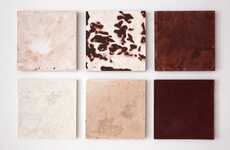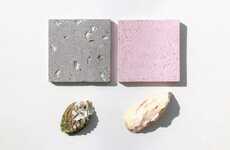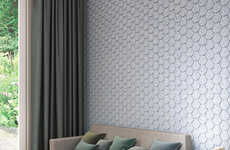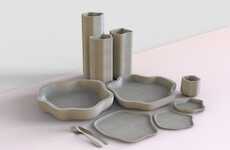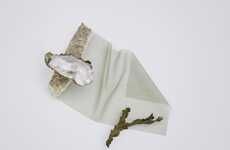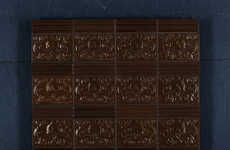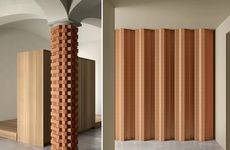
Bureau De Change Uses Thames Glass for Its New Range of Tiles
References: lulu-harrison & dezeen
Artist Lulu Harrison—a student at Central Saint Martin's Material Futures program—has developed an innovative material that is being incorporated by London architecture studio Bureau de Change in its newest range of bio-glass tiles. Harrison relied on quagga mussels as foundational material for her innovation. She grounded them up and combined them with local sand and waste wood ash.
In collaboration with Bureau de Change, the student sought ways for the bio-glass tiles to be incorporated into architectural practices for more sustainable building construction. The result is "a series of cast glass facade tiles" with beautiful textural designs. These were on display during London Craft Week, as part of the Beautility: How Fusing Beauty and Function Can Change the World exhibition.
Image Credit: Dezeen
In collaboration with Bureau de Change, the student sought ways for the bio-glass tiles to be incorporated into architectural practices for more sustainable building construction. The result is "a series of cast glass facade tiles" with beautiful textural designs. These were on display during London Craft Week, as part of the Beautility: How Fusing Beauty and Function Can Change the World exhibition.
Image Credit: Dezeen
Trend Themes
1. Sustainable Building Materials - The use of quagga mussels, local sand, and waste wood ash as foundational materials for bio-glass tiles creates an opportunity for more sustainable building construction.
2. Bio-glass Manufacturing - Innovative materials like those developed by Lulu Harrison and Bureau de Change can lead to the development of new bio-glass manufacturing methods.
3. Integration of Art and Architecture - The combination of art, design, and architecture can lead to new and innovative materials for building design and ornamentation.
Industry Implications
1. Architecture and Design - Incorporating sustainable building materials and innovative manufacturing methods can lead to new opportunities for architecture and design firms.
2. Construction - The use of alternative materials for building construction can create opportunities for the construction industry to become more sustainable and environmentally-friendly.
3. Art and Decorative Design - The integration of art into architecture and design can lead to innovative new materials for decorative design and ornamentation.
7.2
Score
Popularity
Activity
Freshness


